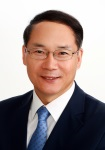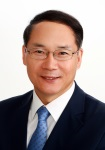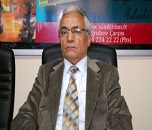Day 3 :
Keynote Forum
Jaehwan Kim
Inha University, South Korea
Keynote: Recent advancement of renewable smart materials
Time : 09:00-09:35

Biography:
Jaehwan Kim has joined the Department of Mechanical Engineering at Inha University, Korea in 1996, where he serves as Inha Fellow Professor. He is a Fellow of The Korean Academy of Science and Technology, National Academy of Engineering of Korea and Institute of Physics. He is an Associate Editor of Smart Materials and Structure as well as Smart Nanosystems in Engineering and Medicine and Editor of International Journal of Precision Manufacturing and Engineering and Actuators. He has been the Director of Creative Research Center for EAPap Actuator. Recently, he has started another Creative Research Center for Nanocellulose Future Composites. He has first discovered cellulose as a smart material, which can be used for sensors, actuators and electronic materials. His research interests are smart materials, structures and devices; biomaterial based smart materials, cellulose, electroactive polymers, power harvesting, biomimetic actuators, biosensors, tactile sensors and flexible electronics. He has published more than 250 prestigious journal papers, 280 international conference papers, more than 30 patents.
Abstract:
Sustainability is essential in future technologies to harmonize with our living environment. Renewable materials can maintain our resources from the environment so as to overcome degradation of natural environmental services and diminished productivity. Cellulose is one of the nature’s most abundant natural polymers, the main chemical components of wood and plants. It is a renewable material that recycles to nature by composting with short period of time. The use of renewable materials is essential in future technologies. This presentation reviews recent advancement of renewable materials for smart material applications, including cellulose and its sensors, actuators and energy storage applications. To further improve functionality of renewable materials, hybrid composites of inorganic functional materials are introduced by incorporating carbon nanotubes, titanium dioxide and tin oxide conducting polymers and ionic liquids. Since renewable materials have many advantages of biocompatible, sustainable, biodegradable, high mechanical strength and versatile modification behaviors, more research efforts need to be focused on the development of renewable smart materials.
Keynote Forum
Yongmei Zheng
Beihang University, China
Keynote: Bioinspired gradient surfaces: From design to functions on wettability
Time : 09:35-10:10

Biography:
Yongmei Zheng is currently a Professor at School of Chemistry and Environment, Key Laboratory of Bio-inspired Smart Interfacial Science and Technology of Ministry of Education in Beihang University, China. Her research interests are focused on bioinspired surfaces with gradient micro- and nanostructures to control dynamic wettability.
Abstract:
Biological surfaces provide endless inspiration for design and fabrication of smart materials. It has recently been revealed to have become a hot research area in the materials science world. The capture silk of the cribellate spider Uloborus walckenaerius collects water through a combination of multiple gradients in a periodic spindle-knot structure after rebuilding. Inspired by the roles of micro- and nanostructures (MNs) in the water collecting ability of spider silk, a series of bioinspired gradient fibers has been designed by integrating fabrication methods and technologies such as dip-coating, Rayleigh instability break-up droplets, phase separation, strategies of combining electrospinning, electrospraying and web-assembly. Through such fabrications, spindle-knot/joint structures can be tailored to demonstrate the mechanism of multiple gradients (e.g., roughness, smooth, temperature-respond, photo-triggering, etc.,) in driving tiny water drops. A water capturing ability can be developed by the combination of slope and curvature effects on spindle-knots on bioinspired fiber. The heterostructured fibers have been fabricated by electrohydrodynamic strategies are intelligently responding to environmental humidity. A temperature-responsive fiber can realize the directional transport of droplet effectively. The multi-geometric gradient fiber achieves the droplet target transport in a long range along as-designed bioinspired gradient fiber. In contrast, biological surfaces such as plant leaves and butterfly wings with gradient structure features display the effect of water repellency. Smart bioinspired surfaces can be fabricated by combining machining, electrospinning, soft lithography and nanotechnology. The gradient surfaces exhibit robust transport and controlling of droplets. These bioinspired gradient surfaces would be promising applications into anti-icing, liquid transport, anti-fogging/self-cleaning, water harvesting, etc.
- Materials for Energy Conversion and Storage Devices
Smart Structures
Location: Hall - B

Chair
Jaehwan Kim
Inha University, South Korea

Co-Chair
Yongmei Zheng
Beihang University, China
Session Introduction
Satilmis Basan
University of Hittite, Turkey
Title: Thermal degradation of two tung oil based reactive diluents and linseed oil alkyd
Time : 10:25-10:50

Biography:
Satilmis Basan has completed his PhD from Hacettepe University and Postdoctoral studies from Glasgow University, Department of Chemistry and Akron University, Department of Polymer Engineering. He is the Head of Department of Chemical Engineering, Founder Dean of Faculty of Engineering at Hittite University and Editor in Chief of Journal of the Turkish Chemical Society, Section B: Chemical Engineering. He has published more than 24 papers in reputed journals.
Abstract:
Thermal degradation of two tung oil based reactive diluents, linseed oil alkyd and different amounts of two reactive diluents having paint formulations were investigated using TGA and DSC under non-isothermal conditions and dynamic nitrogen atmosphere and air. Activation energies were obtained from Freidman method and Freeman-Carroll method and subsequently the pre-exponential factor ‘A’ and reaction order ‘n’ for reactive diluents and alkyd were also determined according to general rate equation. From kinetic analysis of the thermal degradation of using TGA, it was founded that thermal degradation of two diluents and alkyd has taken place in one stage but thermal degradation of all paint formulations have taken place in more than two stages. As shown from Freidman method and Freeman-Carroll method, the chemical composition and atmosphere of reactive diluents influenced the thermal degradation. Increasing reactive diluents decreased slightly the thermal stability of linseed oil alkyd.
Ioana Csaki
Politehnica University Bucharest, Romania
Title: In situ geothermal test results for multilayer coated steel
Time : 10:50-11:15

Biography:
Ioana CSAKI, Associate professor, PhD Engineer is working in Engineering and Management of Metallic Materials Production Department, Materials Science and Engineering, University Politehnica Bucharest, She published a series of 5 books, and over 45 articles and conference papers from which: 16 articles in ISI journals and proceedings and 32 articles in journals indexed in international data base. She was project partner for 3 international research grants, 1 being the project manager on behalf of UPB and participation at over 48 research national grants. She is also project manager for EEA grants collaboration between University Polytechnic Bucharest and University of Iceland. The research directions approached were metallic powders processing for new multi-component materials through powder metallurgy advanced materials, composite materials, high entropy alloys with very good mechanical properties and multi-component materials for coating parts submitted to high corrosion environment and high wear.
Abstract:
Geothermal steam contains dissolved minerals that can precipitate from the liquid and deposit onto the surface of the blades and rotors used for turbine producing geothermal energy. This process is called scaling and it occurs due to a change in temperature, pressures or PH values of the geothermal fluid disturbing the equilibrium of the system. When scaling occurs in geothermal equipment can create major problems in geothermal power production. A solution to avoid these problems consists in coating the steel made turbine blade with different materials layer. These coatings will provide corrosion and erosion resistance and durability for the equipment used in geothermal energy. Samples coated with Ni base alloy and Y using high velocity oxygen fuel technique was investigated after in situ testing in Hellisheiði power plant in Iceland. This paper aims to investigate the microstructure, physical and chemical properties of the coating providing a view on the composite materials behavior under geothermal steam. The studied composite powders are designed to prevent corrosion damages and have good reliability during the geothermal turbines life. Powder multi-component and composite layers obtained were investigated using a system characterization by X-ray difractometer and SEM and EDX analysis to obtain detailed information about the complex modifications inside of the structure and on interface deposition.
Wolfgang Sigmund
University of Florida, USA
Title: Smart nanomaterials structures
Time : 11:15-11:40

Biography:
Dr. Sigmund is currently Professor of Department of Materials Science and Engineering at University of Florida, USA. He obtained a B.S. in Chemistry from the University of Heidelberg, Germany. Before obtaining his Ph.D. at the Gutenberg-University of Mainz, he began work on colloidal particle systems at the Max-Planck-Institute for Polymer Research in Mainz with Prof. G. Wegner. In the early 1990’s, Dr. Sigmund held post-doctoral positions. He was at RIKEN’s (located in Japan) Frontiers of Nanoscience Program in 1992. Then he joined the Max-Planck Institute of Metals research and moved to the University of Florida in 1999. His main focus is on the interdisciplinary development, synthesis, and characterization of novel materials such as nanomaterials for energy harvesting and storage; colloid and surface science; fusion of bioenergy systems with engineered systems; electrospinning of nanomaterials; enhancing materials’ properties.
Abstract:
Surfaces are key for applications that require sticking or non-sticking, high or low friction. We recently investigated surfaces of plants and spiders and transferred these findings into synthetic surfaces. This talk will present three foci: Plastron surfaces that repel all liquids, repulsive van der Waals surfaces for quantum lubrication and tunable surfaces that respond in microseconds to stimuli. By mimicking surface structures of spiders we are able to reduce contact of water and sticking of water droplets to surfaces yielding perfectly spherical droplets without the need for fluorinated compounds. Modifications of these hairy nanostructures are capable of also repelling low surface tension liquids and oils. To further the non-sticking behavior we also investigate quantum mechanical non-sticking surfaces. By tailoring the electronic properties of engineered surfaces we can achieve repulsive van der Waals forces which are the first step towards permanent quantum lubrication. The last part of the talk will discuss how nanofibers in other morphologies can be produced and used to make surfaces that can respond within microseconds to environmental stimuli. Thus a rotating tire can be designed that may respond to the road condition (temperature or moisture) the moment it touches the road and adjust its adhesion according to its design.
Hussein Alrobei
University of South Florida, USA
Title: a-hematite-molybdenum disulfide and polyhexylthiophene (RRPHTh)- nanodiamond (ND) electrodes for photoelectrochemical applications
Time : 11:40 - 12:00

Biography:
Hussein Alrobei is a Ph.D student under the supervision of Manoj K Ram. He has background in the field of photoelectrochemical, advanced materials, polymers and energy. He has been involved on photoelectrochemical properties on various metal oxides, polymers and conducting polymers, and recently his patent on nano-hybrid structured regioregular polyhexylthiophene blend films for production of photoelectrochemical energy has been approved.
Abstract:
The alpha (a)-hematite (Fe2O3) nanomaterial is attractive due to its band gap, chemical robustness, availability in the nature and excellent photoelectrochemical (PEC) properties to split water into oxygen and hydrogen. However, the a-Fe2O3 suffers from low conductivity, slow surface kinetic, low carrier diffusion and greater electron-hole combination. The electronic properties such as carrier mobility and diffusion of a-Fe2O3 can be improved through doping, synthesis of composite material or formation of structured films. Recently, 2D-molybdenum disulfide (MoS2) has shown interesting photocatalytic activity due to its bonding, chemical composition, doping and nanoparticles grown on other 2D-film. Recently, our group has studied photoelectrochemical properties of hybrid film of regioregular poly (3-hexylthiophene-2, 5-diyl) (P3HT) with nanodiamond as well as P3HT-MoS2. In the present study, we have studied photoelectrochemical properties of polyhexylthiophene (RRPHTh)-nanodiamond (ND) and a-Fe2O3-MoS2 nanocomposite based electrodes films. The photoelectrochemical properties of a-Fe2O3-MoS2 as n-type and ND-RRPHTh as p-type electrodes in photoelectrochemical cell in various electrodes have been studied. We have obtained ~3 to 4 times higher photocurrent and energy conversion efficiencies than the parent electrode based photoelectrochemical cell. We have synthesized nanocomposite a-Fe2O3-MoS2 using sol-gel technique. The nanocomposite a-Fe2O3-MoS2 as well as ND-RRPHTh films were characterized using SEM, X-ray diffraction, UV-vis, FTIR and Raman techniques. The electrochemical techniques were used to understand the photocurrent in electrode/electrolyte interface of a-Fe2O3-MoS2 as well as ND-RRPHTh films in both acid base based electrolyte. The a-Fe2O3-MoS2 and ND-RRPHTh electrodes reveal improved production of hydrogen compared to a-Fe2O3 and aluminum doped a-Fe2O3 and MoS2 doped a-Fe2O3 nanostructured films. The band structure has been used to understand the mechanism of photoelectrochemical water splitting in p-n types based photoelectrochemical cell.

Biography:
Dimitar Dimov is a PhD researcher in Nanoscience and Civil Engineering at the University of Exeter, UK. Dimov has completed his B.Eng in Civil Engineering at Exeter and then was invited straight away to pursue a PhD degree after receiving the award for best individual research project (83%) during his final year of undergraduate. His current work bridges the international research on two-dimensional materials with traditional composite structural materials like concrete. The primary focus is to investigate the chemical and physical alterations of the cement hydration crystals upon the addition of nanomaterials.
Abstract:
The constant need for improvement of strength, ductility and durability of concrete is driving current research efforts towards improving the overall strength of concrete by nano-engineering its chemical and mechanical properties through reinforcement with nanomaterials. Graphene, an atomically thin layer of carbon, has a large specific surface area, high Young’s modulus, high thermal conductivity and excellent electrical conductivity. These properties make graphene one of the most prominent nanomaterial for applications in concrete reinforcement.
Methodology: We report a novel method of increasing the overall compressive strength of concrete with the addition of defect-free, water-stabilised graphene dispersions. We demonstrate that the high-shear exfoliation of graphene in water is extremely efficient for the fabrication of graphene reinforced concrete as it can substitute water directly in the concrete mixture and it is industrially scalable.
Findings: Through a comparative statistical study of the mechanical properties of graphene reinforced and standard concrete we demonstrate that graphene reinforcement increases the strength of early age concrete by up to 18.6 %. Furthermore, our results show that the incorporation of graphene into the concrete matrix increases the compressive strength of the fully cured concrete by 26.
Conclusion & Significance: Our results indicate that the increase in early age compressive strength can contribute towards the urbanisation demands of constructing taller buildings by reducing the required time for keeping the formworks on construction sites, as well as by excluding the addition of chemical admixtures. A unique benefit is that unlike other nanomaterials, our method of production and final product are non-hazardous, making graphene reinforced concrete a promising material for a more environmentally friendly construction industry.
Lunch break 12:40-13:40 @ Restaurant
Closing Ceremony
